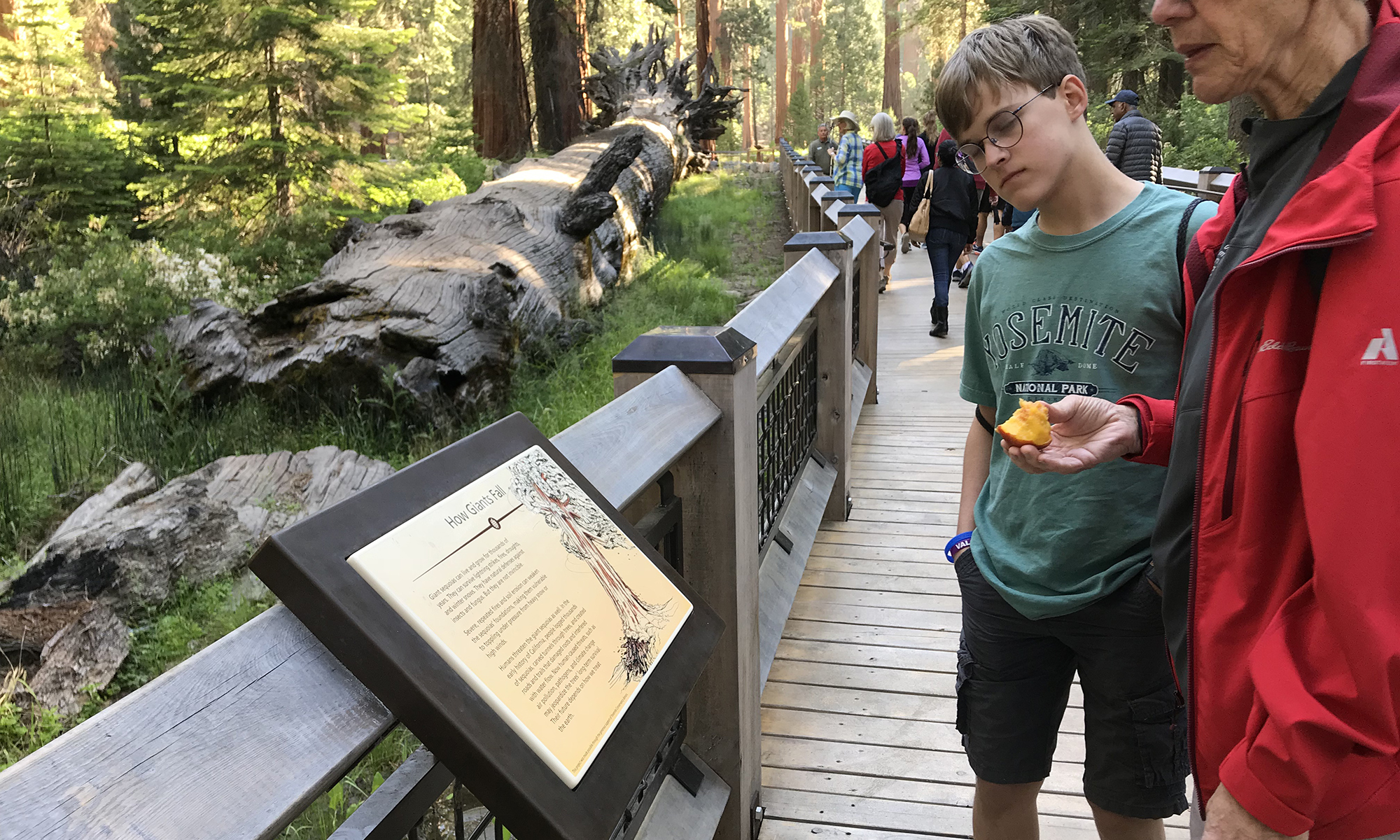Two or three miles before you reach Abiquiu, NM, heading north on Highway 84, you’ll see a U.S. Forest Service parking lot on your left. Take the time to stop — it’s the jumping off place for a really great hike into ancient pueblo history.
The mesa top 150 ft above the parking lot is the site of Poshuouinge, the ruins of a large pueblo likely occupied from about 1375 to 1475 and abandoned well before the Spanish ever arrived in the area we know as New Mexico.
A trail leaves the parking area and switchbacks up the side of the mesa then sets off across the wide flat area, skirting the actual site of the pueblo. Multiple signs warn you against hiking into the area the pueblo once occupied.

A series of small interpretive panels along the trail describe what the pueblo looked like and what life was like for Poshuouinge residents — based on excavations and artifacts collected during the early 20th century.

Continue walking along the main trail. It leads up the hill on the south side of the ruins to a bench and ramada about halfway up. It’s a good vantage point from which to imagine the pueblo’s two large plazas and hundreds of rooms, the gardens outside the walls and down by the river — and all the people.
The trail continues on to the very (very) top of the hill. From the top — a spot that must have been a favorite for lookouts all those centuries ago — the view stretches north across the Rio Chama to the distant mountains. Down below quite clearly is the ghostly outline of the Po-shu ruins.






